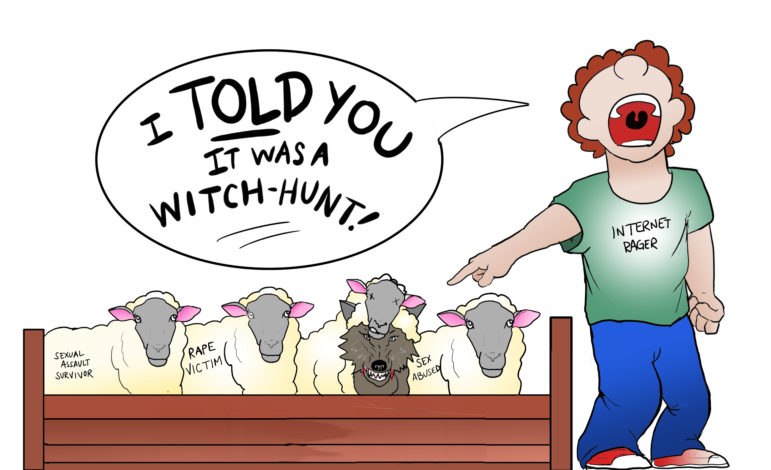
This editorial represents the opinion of 12 out of 15 editors.
Social media platforms give users great power in voicing their opinions, sharing their stories and having discussions. However, these systems also give attention to both positive ideas and hateful messages, and the magnitude in which they do so relies on people’s online responses.
Logan Paul’s posting of an insensitive video last month and the Aziz Ansari story being “misplaced” in the #MeToo movement have resulted in great backlash from users of social media platforms, but for vastly different reasons. While social media is a good way for people to speak about what they think is right or wrong, people who abuse these platforms with unproductive comments fail to move the conversation forward. When a sea of negative responses is paid more attention to than the actual event or movement, we put social media’s potential for playing a positive, change-enacting role at risk.
The first wave of widespread doubt or eye-rolling at the #MeToo movement was an anonymous woman’s story about Aziz Ansari, in which she recalled an uncomfortable encounter she had with Ansari under the pretense of a date. The story came out and caused an uproar, especially among younger people, because Ansari is widely beloved and certainly one of the most feminist men that has been accused in the #MeToo movement. Additionally, the fact that the woman remains anonymous and didn’t write the account herself, but is instead quoted from an interview, makes the article an easy target for criticism and doubt.
This one article was a sort of lynchpin in the #MeToo movement. It became much bigger than just Ansari — many people started to say that it was turning into a witch hunt, that the woman was using her story to humiliate someone and ruin their career, or that the story wasn’t newsworthy at all because it wasn’t assault in legal terms. It sparked the biggest backlash against #MeToo so far, and made many wonder what the movement was coming to and what it actually stood for.

But instead of raising the legitimate questions that the article presented, such as where the legal line for sexual assault should be drawn, responses were almost solely focused on people’s anger either at the Ansari claim or at those angry people. This just perpetuated a cycle of outraged Twitter comments and failed to move forward the valuable conversation that the Ansari article introduced.
This isn’t uncommon with social media though. Users of these platforms start something, and sometimes subsequently ruin it. #MeToo hasn’t imploded completely, but it definitely lost some power when controversial stories like that of Ansari’s tacked on to the tag.
One issue is that sometimes when a controversial story comes out related to the movement, it wrecks people’s opinions of the other stories and the movement as a whole. This phenomenon is the product of opposition to the movements pointing out the one bad apple of the bunch and claiming all others on the tree are now rotten.
Obviously it isn’t true, but it’s an effective tactic and even supporters of the movement might be weary of its evolution. There is a trend with hashtags like this starting out strong, with plenty of positive response and encouragement, but then failing to make any real progress because their legitimacy is called into question and they lose support and momentum.
On the other hand, the responses to the vlog Logan Paul made in Japan’s suicide forest in early January is an example of many smaller, counterproductive comments drowning out those that hold more potential for enacting change. As opposed to the #MeToo movement, it wasn’t one “bad apple” that prevented truly positive change from taking place – it was the result of a sea of unproductive, hateful comments that didn’t serve to further the conversation about what content creators like Paul deserve when they post an incredibly insensitive, inappropriate video.
While we disagree with what Paul did, we believe that comments telling someone to end their own life, which Paul says he has received since posting the video, for example, are a counterproductive, equally improper response to the real issue at hand.
There is no doubt that what Paul did was insensitive, but intense, sometimes hypocritical, social media backlash can be ineffective when it drowns out those more important responses that actually attempt to propose a solution and move the conversation forward. In the end, YouTube only took him out of the Google Preferred program and he was taken off of a YouTube Red web series. Judging by his more recent videos, though, he still hasn’t learned his lesson.
When a hashtag becomes more about the negative responses as opposed to the intended message, we should use our power to move the conversation forward. There are many other ways we can make a difference and contribute to a movement or idea besides sitting behind a screen.
These conversations help expose societal problems, as well as bring change to the real world. So ultimately, it’s our job to prevent these talks and movements from dying out before they make an impact, and also to raise the real questions behind controversies instead of falling back on angry comments.





